Vegueta's Las Palmas de Gran Canaria's old town. It's where it all began. There are some fantastic examples of architecture here, with the Catedral de Santa Ana taking centre stage.
Saint Anne's Square
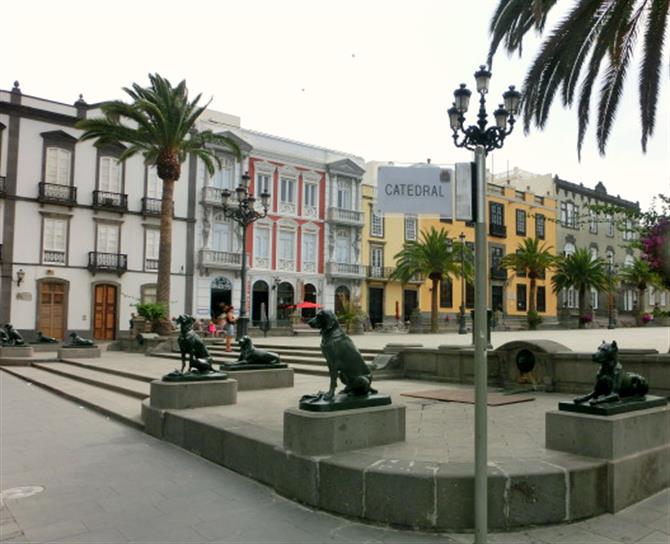
The easiest way to get to the Catedral de Santa Ana is by foot. Travelling from Plaza Cairasco in Triana, it's a five-minute walk. Head south and turn right onto Calle Remedios before turning left onto Calle Muro. After crossing the GC-5/C-811 at the traffic lights, continue onto Calle Obispo Codina.
The cathedral will soon appear on your left-hand side. On the right, you'll see Plaza de Santa Ana. Where eight bronze dogs guard the cathedral. Gran Canaria owes its name to the Mauritanian king Juba II. He proclaimed the island Canaria because, according to the Roman historian Pliny the Elder, it was home to "vast multitudes of dogs of very large size".
Cathedral city
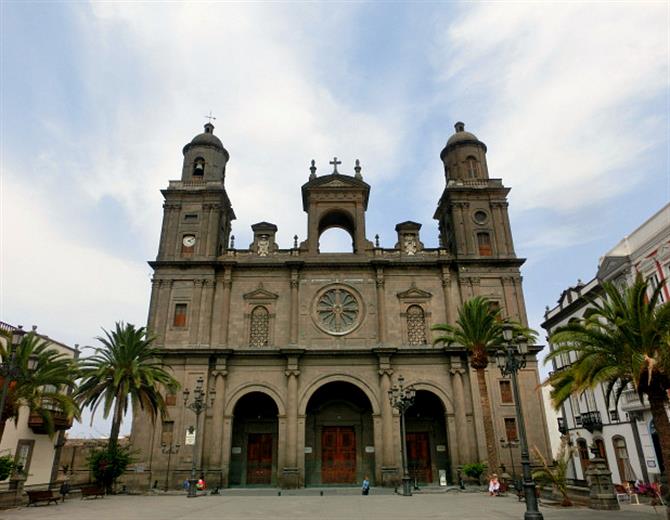
To fully admire Las Palmas de Gran Canaria's cathedral, head towards the Casa Consitoriales at the far end of Plaza Santa Ana. Just before reaching them, stop and turn around. Now look back on what many consider to be the finest architectural structure on the whole of the Canary Islands.
Work started on building the cathedral in 1500, 22 years after the city of Las Palmas de Gran Canaria was founded. Since then, four different architects have been involved in its design. With the result, it features late gothic, neoclassical, and baroque styles.
For whom the bell tolls
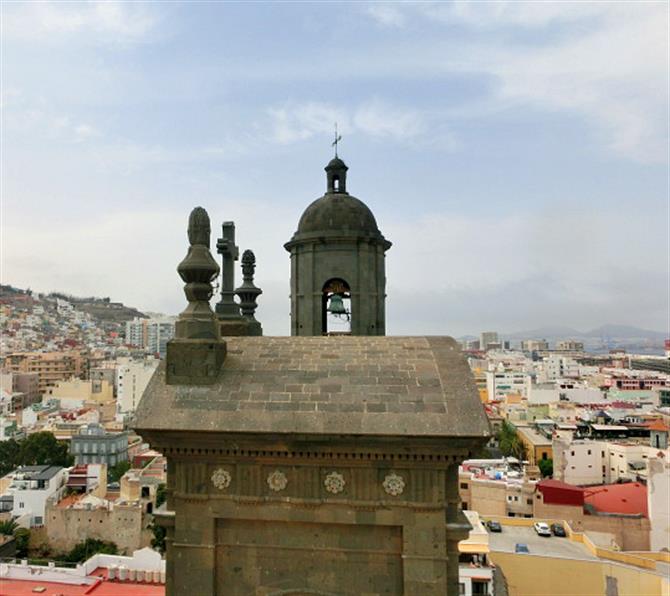
You won't be able to enter the cathedral itself from Plaza de Santa Ana. However, you can take the lift up to the twin towers. Here you'll be able to enjoy a Lowryesque view of the city of Las Palmas de Gran Canaria below, complete with matchstick men.
Admission to the cathedral's elevator's free with a LPA Card. The alternative's to shell out €1,50 for the privilege. Do look down for some of the best aerial shots for your Las Palmas de Gran Canaria holiday scrapbook.
Atlantic Ana
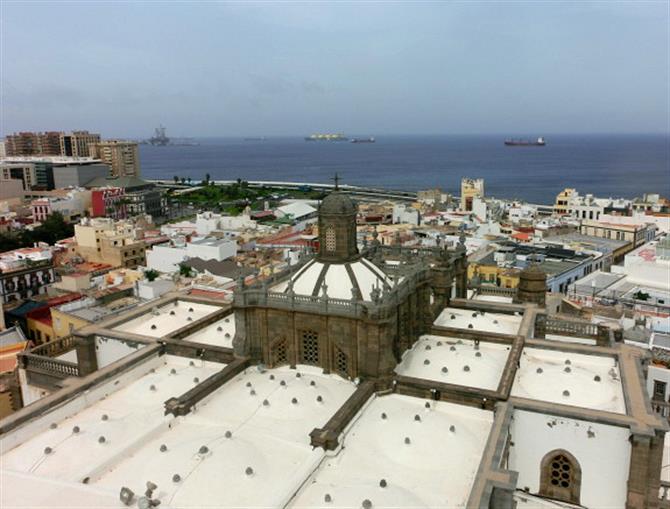
Due east, you'll enjoy a vista over the Atlantic Ocean below. As the major port in the mid-Atlantic, you're always going to see boats. And if you're there on the November 10th, you'll see 200 of them set off on the ARC, the Atlantic Rally for Cruisers which will see them sail 2,700 nautical miles to Santa Lucia in the Caribbean.
Orange Tree Patio

To gain access to the cathedral proper, continue heading away from Triana on the Plaza de Santa Ana. Take the first left onto Calle Espiritu Santo and you'll see the entrance just in front of you on the left-hand side. Adults must pay €2,40 to get in.
Before you enter the cathedral, you'll pass the Patio de los Naranjos. Whilst not as impressive as Seville's more famous version, it's a idyllic place to sit and contemplate in what feels like an inner sanctum. This is where you'll find the Museo de Arte Sacro.
Sacred Art Museum
The Museo de Arte Sacro, in common with the cathedral, is open from 10:00am to 4.30pm Monday to Friday and 10:00am to 1:30pm on Saturdays. It's closed on Sundays and during the Semana Santa (Holy Week) celebrations of Easter. The work of the Dutch masters is in evidence here, along with the grand Canarian himself, Luján Pérez.
The cathedral of palms
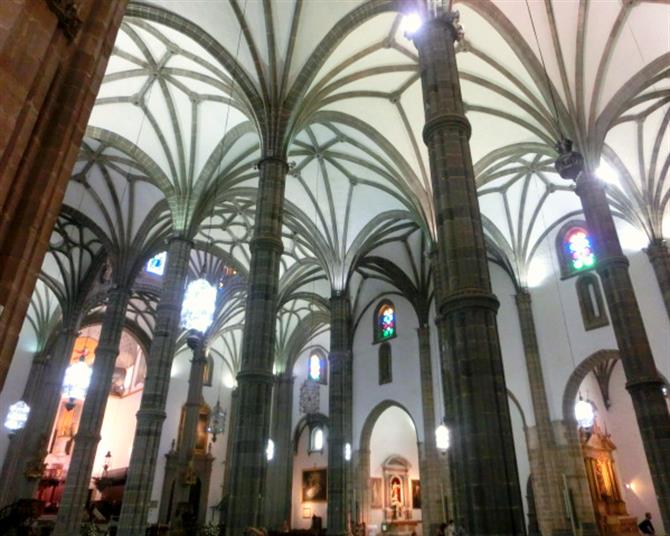
The design of the cathedral follows the Pointed style, beloved of Gothic architects. Check out the piers, made to resemble palm trees. Whilst you can't put a palm tree inside a religious building, although there's one in the Patio de los Naranjos, the cathedral's first architects made up for it by including imitation palms instead.
Cathedral 360
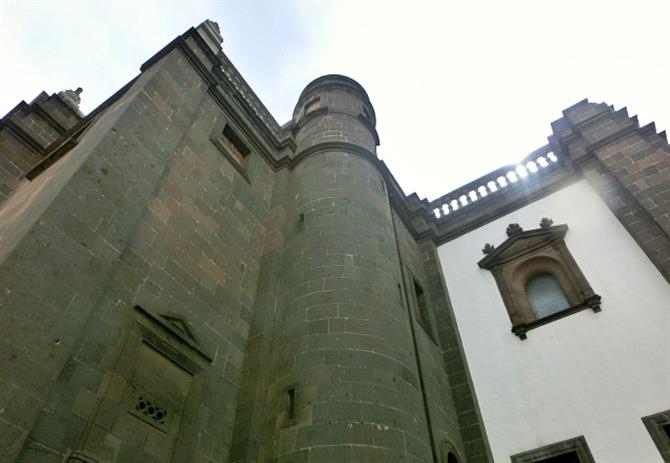
One of the joys of a paseo around Vegueta is the chance to enjoy views of the Catedral de Santa Ana from every conceivable angle. Here, we see it from the vantage point of the nearby Casa de Colón. Although Christopher Columbus would not have been able to take in this vista himself, considering they didn't start building the cathedral until after he had left the island.

